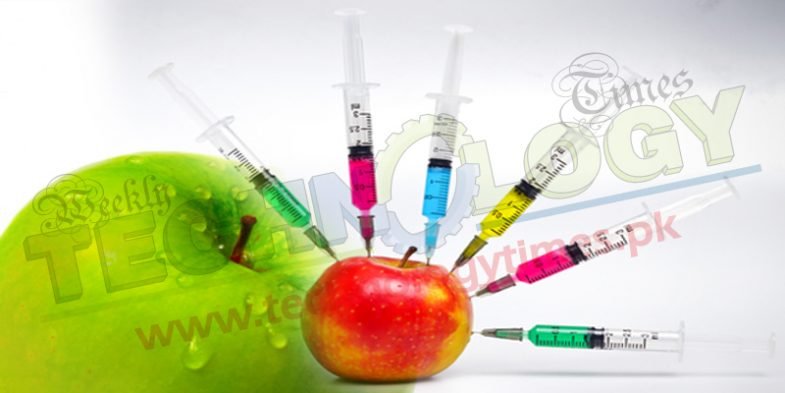Food adulteration has become a common issue in our society. Now there is no difficulty to say that every edible processed item contains intentionally added substances, which may lead to some hazardous effects on consumer health. The main purpose of addition of these substances is to create some Extra profit but the adulterer does not know the freaky outcomes of this phenomenon.
Food adulterants are the chemical substances that are added (intentionally) in food to alter its properties that may lead to extra profit for producer or retailer. This may range from addition of water in milk to addition of brick powder in red chili powder and many more. But thanks to the Scientific study and research for enabling us to develop several methods to determine these hidden health enemies.

Due to lack of proper laboratory facilities and instrumental approach, it is difficult for a common man to identify these hazardous substances but there are several household methods that are considered fruitful for detection without using any sophisticated instruments or expensive reagents. Some of the common methods to determine adulterants are given below:
Milk adulteration determination:
The most common and easiest substrate for adulteration is milk. According to the recent survey in Punjab about 70% of milk in urban areas is adulterated with not only with water but various harmful chemicals like Urea, non food starches, melamine, Washing soda and Baking soda etc. These chemicals along with added unhygienic water may lead to cancer, nausea, food poisoning and several heart problems.
Place a drop of milk on an inclined surface. If drop leaves a white trail or streak it is adulterated. Another method that can be commonly employed at home includes boiling of milk and sensory evaluation. If it turns yellow on heating and gives bitter and soapy taste, then it is adulterated with synthetic substance.
Detection of adulterants in Red chili powder:
The most commonly used adulterants in red chili powder are Brick powder and saw dust which are highly carcinogenic in nature. Unfortunately the adulterated chili powder is openly sold in whole sale markets with different prices depend upon varying amount of adulterant portion in product.
Take a clean glass and fill it with water then add 1 tsp of chili powder if colored steaks appear then the chili powder is adulterated.
Detection of adulterants in turmeric powder:
Turmeric powder usually contains non permitted colorants like metanil yellow or yellow dye. These substances have a potential to cause stomach disorders and cancer.
Add a few drops of concentrated mineral acid like HCL in a test tube containing turmeric powder solution. If color changes to pink, purple or violet, the mixture will contain added dye.
Detection of Adulterants in ice cream:
Ice cream processed from adulterated milk contains respective chemicals like washing powder which is highly chronic for liver and stomach
The washing powder containing ice cream starts producing bubbles or foam if lemon juice is added in it.
Detection of Adulterants in Ghee:
In ghee animal fats or starches substances are commonly added as adulterants. These substances may cause anemia or heart enlargement.
Add 1 ml of water in a test tube containing 0.5g of ghee and boil the mixture. Cool the mixture and add 1 drop of iodine in it. The appearance of blue color indicates the presence of starchy substances.
Detection of Adulterants in Sugar:
Sugar is commonly used household food ingredient. Chalk powder is intentionally added in sugar to increase weight which in turn gives extra profit to seller.
The pure sugar when added in water sinks directly to the bottom. In the presence of chalk powder the adulterant remains on the surface.
Detection of Adulterants in Tea:
Tea may contain artificial colors. The very harmful textile base colors are frequently used as adulterants that are potentially harmful for liver and stomach.
Sprinkle some amount of tea powder on blotting paper, change in color of blotting paper to orange or yellow indicate the presence of artificial color.
Detection of Adulterants in Honey:
Water is commonly added in honey to make it impure. Addition of unhygienic water further enhances the health risks.
Dip the cotton wick in adulterated honey. It will not burn when ignite with matchstick while the burning occur in case of pure honey.
Detection of Adulterants in coffee:
The dry root of the chicory plant is used as adulterants in coffee and decreases its purity level.
Sprinkle the Coffee powder contain chicory on the surface of water in glass the coffee floats on surface while the chicory particles settle down with a yellow trail leave behind.
Detection of Adulterants in wheat flour:
Even the wheat flour contains intentionally added chalk Powder which can be identified by adding few drops of concentrated HCL by effervescence.
The only long term solution to overcome this social ailment is to modify the behavior which can be attained through religious and social education with fair implementation of food safety laws.
This article is written by Syed Shoaib Bukhari, MSc(hons.) Food Technology National Institute of Food Science and Technology University of Agriculture, Faisalabad.